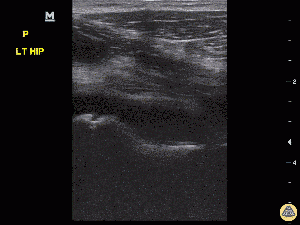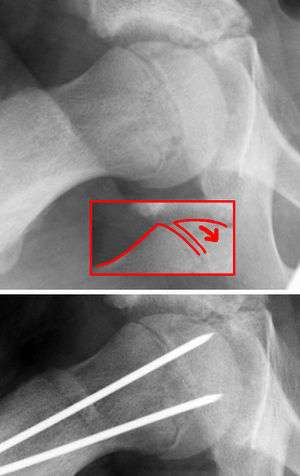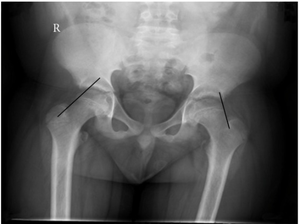Hip pain (peds)
This page is for pediatric patients. For adult patients, see: hip pain
Background
- It can be difficult to differentiate hip from knee pain in children
Clinical Features
- Hip pain
- +/- Limp
Differential Diagnosis
Evaluation

Left hip effusion[1]

X-ray showing a slipped capital femoral epiphysis, before and after surgical fixation.

A normal and abnormal epiphyseal line as described by Klein et al. in an 11 year 6 month old boy with a left SCFE. Proximal prolongation of the superior neck line transects the epiphysis in the normal hip (right) but either lies flush with or does not transect the epiphysis in SCFE (left hip).
Workup
- X-ray hip (AP & bilateral Frog leg), femur, knee
- Consider CBC, ESR, CRP
- Consider:
- Ultrasound to evaluate for effusion
- CT or MRI to evaluate for abscess
Kocher Criteria for septic arthritis of the hip
- ESR > 40
- WBC > 12
- Refusal or inability to weight bear on affected joint
- Fever
| Number of Kocher Criteria | Chance of Septic Joint |
| 1 | 3% |
| 2 | 40% |
| 3 | 93% |
| 4 | 99% |
Management
- Depends on diagnosis
- Transient (toxic) synovitis is diagnosis of exclusion
Disposition
- Depends on diagnosis
- Transient (toxic) synovitis is diagnosis of exclusion
See Also
- Limp (Peds)
- Hip Pain
References
This article is issued from
Wikem.
The text is licensed under Creative
Commons - Attribution - Sharealike.
Additional terms may apply for the media files.